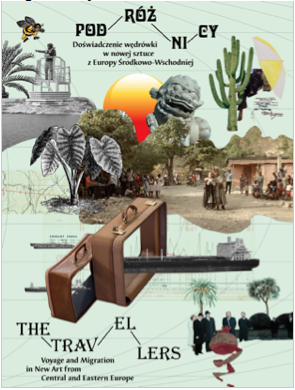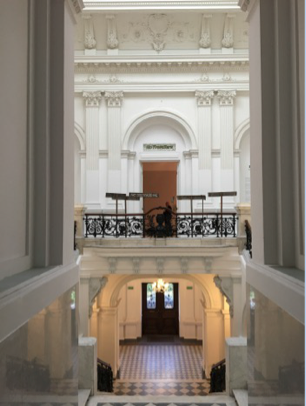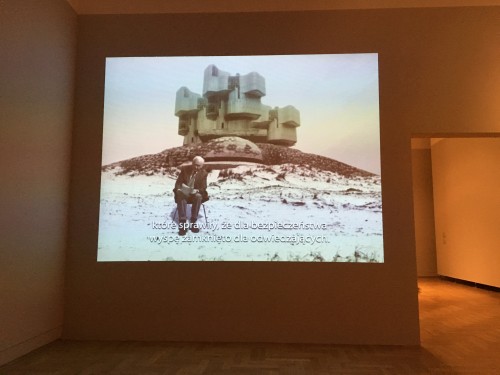The Travelers: Voyage and Migration in New Art from Central and Eastern Europe

The Travelers: Voyage and Migration in New Art from Central and Eastern Europe
Zachęta National Gallery, Warsaw
May 14 – August 21, 2016
During the summer of 2016, a five-ton marble column greeted passersby on the sidewalk in front of the Zachęta National Gallery. Flanking the main entrance, the horizontal form was at once humorous in its uselessness and confusing in its dislocation. Was this a sculpture? Or perhaps an unfinished and abandoned renovation? In fact, it was part of almost forty artworks featured in The Travelers: Voyage and Migration in New Art from Central and Eastern Europe, curated by Magdalena Moskalewicz. Adrian Paci’s Column (2013) consisted of not only the puzzling behemoth outside, but also a video chronicling the process of commission, creation, and transportation of this architectural icon. Literally “made in China,” Column questioned authenticity and cultural identity in the context of today’s accelerated worldwide exchange of goods, labor, and capital.

The Travelers brought together twenty-three artists from fifteen countries and examined travel and migration from the perspective of the former Eastern Bloc. Admittedly, themes like diaspora, exile and nomadism in contemporary art are nothing new. What makes this show’s inquiry distinct is the focus on the Eastern European experience. The artists represented here have roots in a time and place where travel was severely restricted and came to be equated with broader notions of freedom. Since 1989, the region has experienced dramatic political and economic transformations, its people now enjoying access to places and things formerly denied. The Travelers examined how these changes — and the shared heritage of Eastern European history — have shaped attitudes and experiences of travel and migration. Embracing the thrills of exploration and the value of a plural perspective, Moskalewicz also critiqued what she calls Europe’s “one-way” attitude toward globalization, stating: “We are enthusiastic about going abroad, but far less so about welcoming foreigners.”[1]

The exhibition presented a balanced interpretation of post-1989 travel in several ways. Adéla Babanová’s film, Return to Adriaport (2014), investigated the euphoria of mobility, combining fact and fiction to visualize the Cold War era desire for travel. This romantic account was juxtaposed with Sislej Xhafa’s Barka/The Barge (2011) — a massive boat form constructed out of piles of worn and dirtied shoes. The artist collected his found materials on the beaches of Lampedusa, an island located between Tunisia and Italy. Speaking to the horrors faced by refugees, Xhafa’s installation critiqued European resistance to migrants and refugees.
Another concern for the exhibition was the question of identity, which was repeatedly prodded in a way that allowed for ambivalence, thus encouraging viewers to consider what this means in a region whose circumstances have changed so drastically. Alban Muja’s My Name, Their City portrait series (2013) explored this complexity through photography. The artist captured each subject against a white background, holding an image of a scenic town. As the children of Albanians who found themselves living in Kosovo after the fragmentation of Yugoslavia, these individuals were named after towns their families could no longer return to. Thus, each portrait represents a person and place that share a name but remain physically and geographically separated.

Through her careful selection of work, Moskalewicz crafted an exhibition whose central concerns emerge repeatedly and clearly, guiding viewers through some of the complexities of contemporary travel and migration. Exposing an important perspective, the show was at once optimistic and critical, encouraging viewers to consider their own place in the world—especially as this “place” is increasingly mobile.
Ewa Matyczyk
[1] Wall Text, Magdalena Moskalewicz, The Travelers: Voyage and Migration in New Art from Central and Eastern Europe, Zachęta National Gallery, Warsaw (May 14 – August 21, 2016)